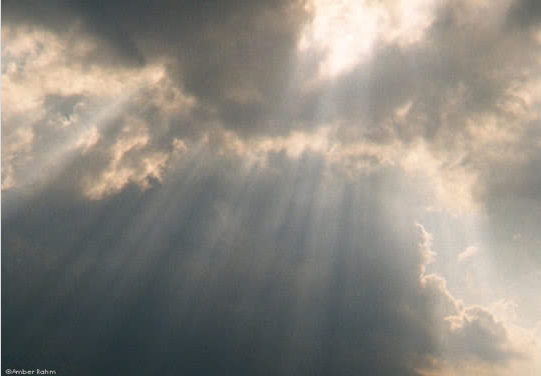Crepuscular rays
Crepuscular Rays: Nature's Spectacular Light Show
Crepuscular rays, also known as sunbeams, are a mesmerizing atmospheric optical phenomenon that occurs when sunlight is scattered by dust, aerosols, or other particles in the atmosphere. These rays appear to radiate from the position of the sun and extend across the sky, creating a breathtaking display of light and shadow. While they are most commonly observed during sunrise or sunset, crepuscular rays can also occur at other times of the day under specific atmospheric conditions.
What Causes Crepuscular Rays?
The formation of crepuscular rays is a result of the scattering of sunlight by atmospheric particles. When the sun is low on the horizon, its light has to pass through a larger portion of the Earth's atmosphere. This atmospheric scattering causes the shorter wavelengths of light, such as blue and green, to scatter more widely, while the longer wavelengths, like red and orange, travel in a more direct path. As a result, the rays appear to converge towards the position of the sun.
Atmospheric Conditions for Crepuscular Rays
To witness the enchanting display of crepuscular rays, certain atmospheric conditions need to align. Here are some factors that contribute to their formation:
-
Clouds or Aerosols: The presence of clouds or aerosols in the atmosphere provides the necessary scattering medium for the rays to form. These particles act as obstacles, causing the sunlight to scatter and create the distinct rays.
-
Sun's Position: Crepuscular rays are most prominent during sunrise or sunset when the sun is near the horizon. At this angle, the sunlight has to pass through a greater distance in the atmosphere, enhancing the scattering effect.
-
Obstructions: The interaction between sunlight and objects on Earth's surface, such as mountains, buildings, or trees, can cast shadows that accentuate the visibility of crepuscular rays. These obstructions create a stark contrast between the illuminated rays and the shaded areas.
Types of Crepuscular Rays
Crepuscular rays can manifest in various forms, each adding its own unique touch to the spectacle. Some common types include:
-
Radiating Rays: These are the classic crepuscular rays that appear to radiate from the position of the sun, spreading across the sky like the spokes of a wheel. They are often observed during sunrise or sunset, creating a stunning backdrop of light and shadow.
-
Anti-Crepuscular Rays: Unlike radiating rays, anti-crepuscular rays appear to converge towards the point directly opposite the sun in the sky. This phenomenon occurs when the sunlight is scattered at a particular angle, creating a captivating display of converging beams in the opposite direction.
-
Brocken Spectre: Sometimes, when crepuscular rays intersect with mist or fog, they can create a captivating optical illusion known as a Brocken spectre. This phenomenon appears as a halo or glory around the shadow of an observer, resulting in a mystical and awe-inspiring sight.
The Magic of Unpredictability
One of the most fascinating aspects of crepuscular rays is their unpredictable nature. The exact conditions required for their formation can vary, making each occurrence a delightful surprise. Even on a seemingly ordinary day, when the sky appears unremarkable, the interplay of sunlight and atmospheric particles can transform the mundane into something extraordinary. This unpredictability adds to the allure of crepuscular rays, making them a rare and cherished spectacle for those fortunate enough to witness them.
Cultural Significance
Crepuscular rays have captivated humanity for centuries, inspiring awe and wonder in various cultures around the world. In ancient times, these rays were often associated with divine or supernatural phenomena, believed to be messages from the gods or portals to other realms. Today, they continue to hold a special place in our collective imagination, symbolizing beauty, transcendence, and the fleeting nature of existence.
Capturing the Beauty
Photographers and artists are drawn to the captivating beauty of crepuscular rays, as they offer a unique and evocative subject for their craft. The interplay of light and shadow, coupled with the ethereal nature of these rays, creates an atmosphere of mystery and enchantment. Through their lenses and brushes, artists strive to capture the fleeting magic of these atmospheric phenomena, immortalizing their beauty for generations to come.
Conclusion
Crepuscular rays are a natural wonder that reminds us of the breathtaking beauty and complexity of our atmosphere. The convergence of sunlight, atmospheric particles, and the Earth's landscape gives rise to this enchanting spectacle. Whether you encounter them during a serene sunset or a misty morning, crepuscular rays offer a momentary escape from the ordinary, allowing us to marvel at the wonders of the natural world. So, next time you find yourself beneath a canopy of sunbeams, take a moment to appreciate the ethereal dance of light and shadow unfolding above you.

Afternoon crepuscular rays.
Vermont, August 1997 captured by Amber Rahm. 'It had become a very grey rain-looming day after a hot bright start. We had driven south to visit someone and on the way back I saw rays. One never knows exactly when the sky will do something extraordinary.'
�Amber Rahm, reproduced with permission
Note: this article has been automatically converted from the old site and may not appear as intended. You can find the original article here.
Reference Atmospheric Optics
If you use any of the definitions, information, or data presented on Atmospheric Optics, please copy the link or reference below to properly credit us as the reference source. Thank you!
-
<a href="https://atoptics.co.uk/blog/crepuscular-rays-4/">Crepuscular rays </a>
-
"Crepuscular rays ". Atmospheric Optics. Accessed on November 26, 2024. https://atoptics.co.uk/blog/crepuscular-rays-4/.
-
"Crepuscular rays ". Atmospheric Optics, https://atoptics.co.uk/blog/crepuscular-rays-4/. Accessed 26 November, 2024
-
Crepuscular rays . Atmospheric Optics. Retrieved from https://atoptics.co.uk/blog/crepuscular-rays-4/.